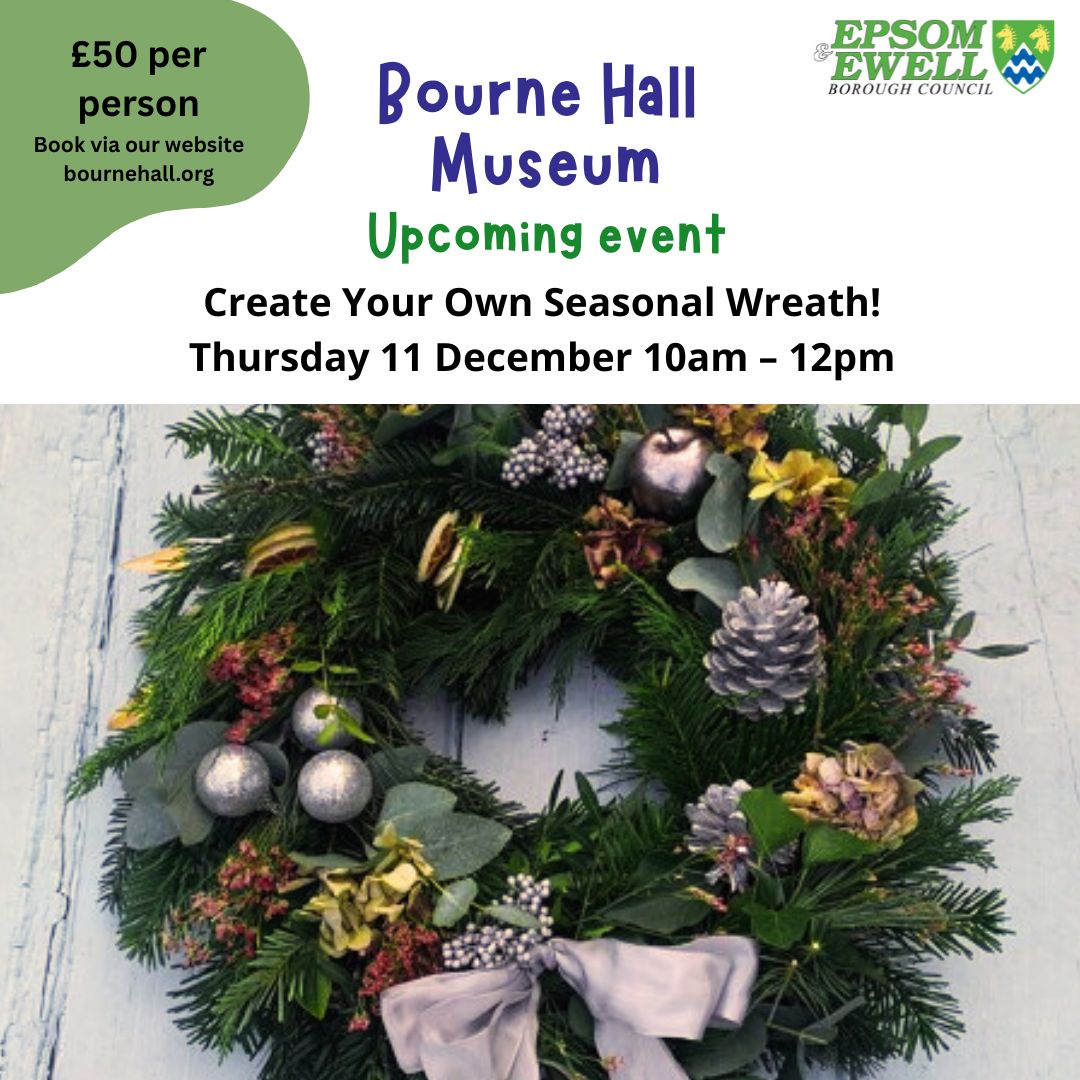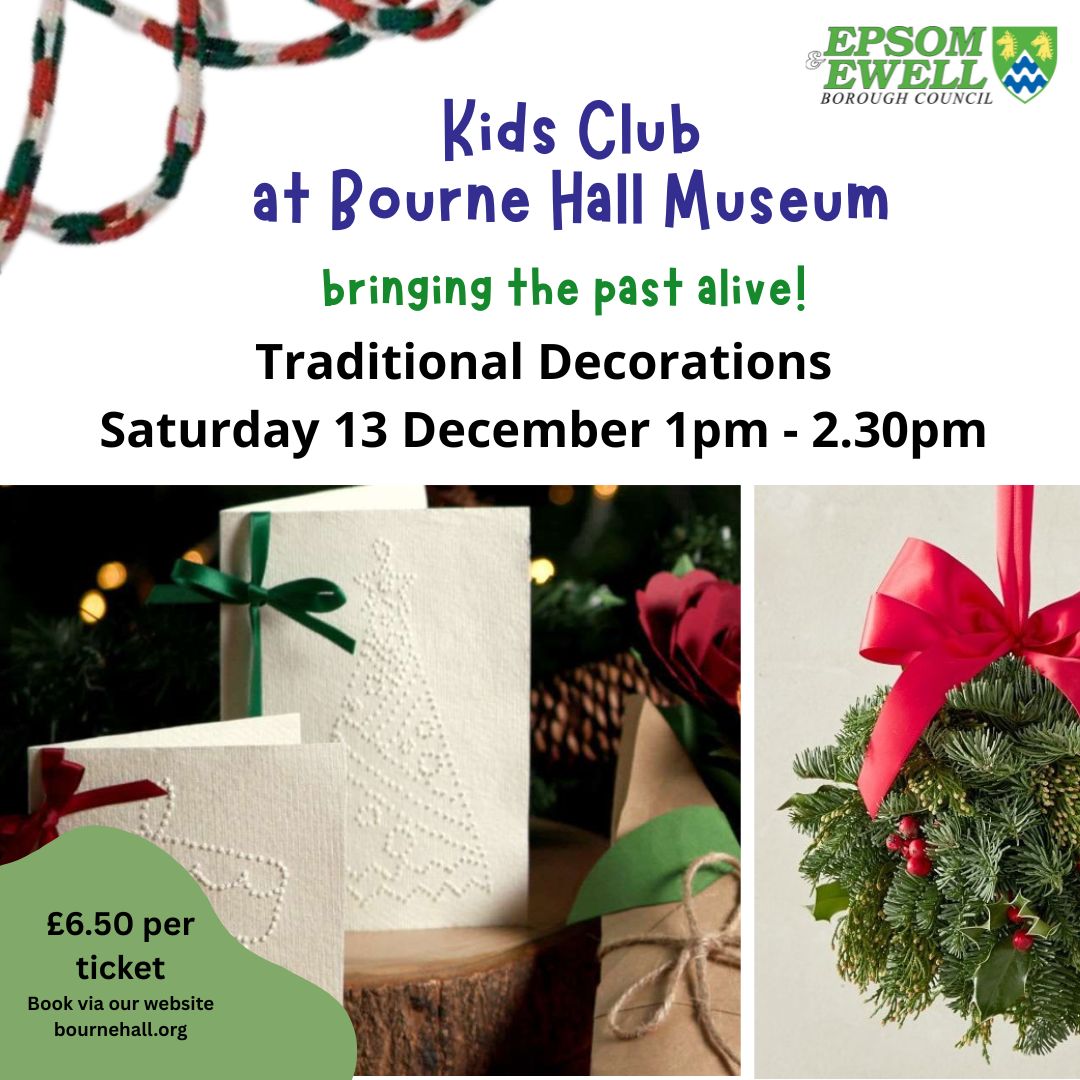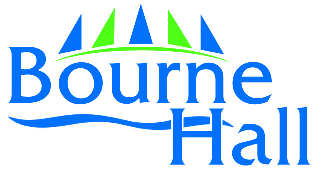Bourne Hall Museum Create your own seasonal wreath! Thursday 11th December 10am - 12pm

Get into the festive spirit and design a beautiful wreath. Tracey will guide you step-by-step as you craft your wreath using fresh spruce and seasonal foliage, then decorate it with gorgeous accessories like cinnamon sticks, dried oranges, limes pine cones, and more!
You don’t need to have any experience as everything you need is included, and you’ll leave with a stunning wreath ready to hang on your door.
Hot drink included
For more information, please contact Susan sdalloe@epsom-ewell.gov.uk 0208 393 1734
Click here to purchase your tickets: Create your own seasonal wreath! Bourne Hall Museum | Sessami
Bourne Hall Museum Kids Club - Traditional Decorations Saturday 13th December 1pm - 2.30pm

How did people enjoy the winter season in Victorian and Edwardian times ? Come along and make your own decorations to take home with you.
Children must be accompanied at all times.
Cost £6.50 per child
Recommended for children ages 8 - 12+
Contact: Susan Dalloe, Bourne Hall Museum, Spring Street, Ewell, Surrey, KT17 1UF.
Tel 020 8394 1734. Email sdalloe@epsom-ewell.gov.uk
Book your tickets here: https://sessami.co/events/traditionaldecorations
Bourne Hall Museum Kids Club - Life in a Palace: Secrets of a Victorian Historian - Saturday 10th January 1pm - 2.30pm

Step into the past and meet a Victorian lady who calls Hampton Court Palace home!
Discover what it’s really like to live in a chilly but exciting royal palace before it opened to the public. Uncover the secret stories of the Kings and Queens who lived there, help design posters to welcome new visitors, play Victorian parlour games and even encounter some spooky ghost stories...
Children must be accompanied at all times.
Cost £6.50 per child
Recommended for children ages 8 - 12+
Contact: Susan Dalloe, Bourne Hall Museum, Spring Street, Ewell, Surrey, KT17 1UF.
Tel 020 8394 1734. Email sdalloe@epsom-ewell.gov.uk
Book yout tickets here: Bourne Hall Museum Kid's Club - Life in a Palace: Secrets of a Victorian Historian | Sessami

